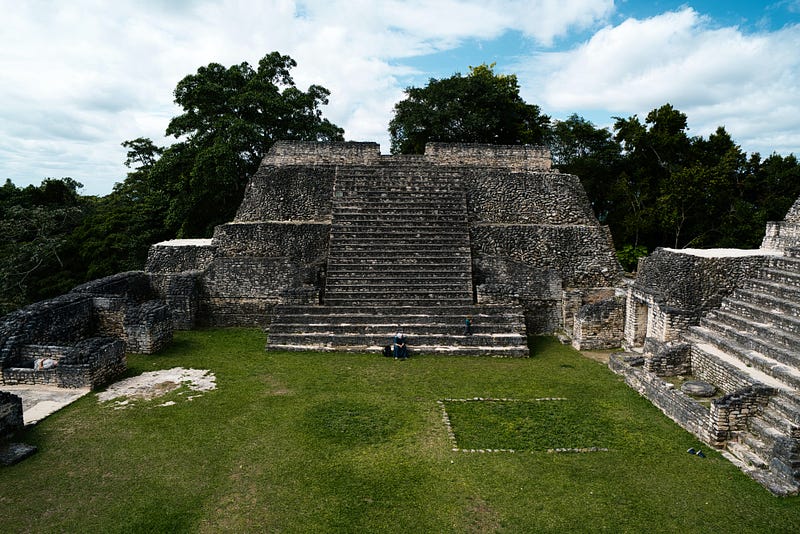Unearthing the Secrets of the Mayan Calendar: Insights and Discoveries
Written on
Chapter 1: Understanding the Mayan Calendar
Recent studies have unveiled intriguing aspects of the Mayan calendar, demonstrating how it was meticulously designed based on astronomical observations from Earth.

The Mayan calendar — [Photo: Matthew G. Bisanz, CC BY-SA 3.0, via Wikimedia Commons] A calendar serves as a framework for a society or civilization to measure time. It establishes cycles that correspond to natural phenomena and celestial movements. In contemporary society, the Gregorian calendar, introduced in 1582, has become the global standard, featuring a year of 365 days, with an extra day every four years. However, the situation with the Mayan calendar is more complex.
Research into the Mayan calendar has been ongoing since the late 19th century, primarily relying on partially deciphered hieroglyphics found on surviving monuments and records left by this ancient civilization. Evidence suggests that this calendar could date back to the 4th millennium BC, and it is widely regarded as one of the most precise calendars ever created. Similar to the Gregorian calendar, it also consisted of 365 days, but was structured with 18 months of 20 days each, plus an additional 5 days known as Haab.
How the Maya Measured Time
In addition to the Haab, the Maya employed a second calendar system: the 260-day ritual solar calendar, referred to as the Tzolkin. This system was composed of "weeks" and "months," each lasting 20 days and numbered from 1 to 13.
A long count complemented the entire Mayan calendar, allowing for the tracking of days from a specific mythical starting point. Scholars believe this "date zero" aligns with approximately August 10, 11, or 13, 3114 BC, although some suggest September 6 as another possibility. This intricate system resulted in a synchronization of both calendars every 18,980 days, or 52 Haab, establishing a new Calendar Round. This enabled the Maya to pinpoint dates with remarkable accuracy.
For centuries, researchers have contemplated how this sophisticated system aligned with planetary movements. Recent investigations have shed light on this enigma.

[Photo by Ronald Plett from Pexels]The Maya's 45-Year Tracking System
The researchers behind this discovery propose that the Mayan calendar was utilized to monitor planetary movements over a span of 45 years. They found inscriptions at various Mesoamerican locations that reference a distinct 819-day cycle. Analysis of these texts previously indicated that this ancient society recognized four significant cycles of 819 days each, culminating in a total duration of approximately 9 years.
Scholars have long speculated that this cycle might correlate with the synodic period of planetary motions, which is the average duration after which a celestial body returns to the same position in relation to two other objects, such as the Sun.
Nevertheless, the researchers noted that the four-part cycle was too brief to encompass all planetary movements. They proposed a solution: extending the calendar to 20 cycles of 819 days, resulting in a comprehensive 16,380-day span, or 45 years. This duration allows for the incorporation of the synodic periods for most planets, creating a coherent framework with a defined beginning and end.
Each planet requires a different amount of time to return to the same position relative to Earth and the Sun. Additionally, the 16,380-day timeframe is a multiple of 260, making it compatible with the Tzolkin ritual calendar. The researchers concluded that the Mayan astronomers who devised the 819-day system envisioned a broader calendar framework capable of forecasting all visible planetary synodic periods.
Source: Ancient Mesoamerica
Chapter 2: The Cultural Significance of the Atacama Desert
The first video, "The Shocking Truth About The Mayan Calendar - Decoding Baqtun," delves into the complexities and revelations surrounding the Mayan calendar's timekeeping methods.
The second video, "The Mayan Calendar Was Finally Cracked by Scientists: It's Amazing," presents groundbreaking discoveries made by researchers regarding the Mayan calendar's synchronization with astronomical events.
Cool that you made it to the end of this article. If you found the information valuable, please consider showing your appreciation with some claps or by following me. A tip would also be greatly appreciated! Thank you!